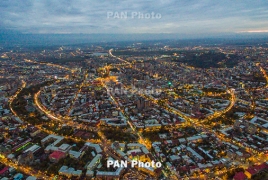
The World Bank has released its monthly summary of Armenia’s economic development, presenting key indicators from November. According to the data, economic growth slowed to just 1.2% year-over-year (YoY) in November compared to the same month last year.
A primary factor in this slowdown was a 19% decline in industrial output, driven by a 24.4% decrease in manufacturing and a 6.9% drop in mining. Specifically, the production of non-ferrous metals plummeted by 70%, Armenpress reported.
At the same time, growth was recorded in certain sectors, with services (excluding trade) growing by 10.4%, while construction and trade maintained double-digit growth rates. From January to November, cumulative economic growth stood at 7.4%, fueled by an 18% increase in trade.
Net non-trade monetary transfers fell by 14.3% in November, particularly from Russia (down 6.2%), the U.S. (down 6.4%), and other countries (down 69%). The annual drop in transfers totaled 21.7%, mainly due to a significant decline in remittances from Russia.
Inflation reached 1.5% YoY in December, the highest level since April 2023. Food and non-alcoholic beverage prices rose by 2%, and healthcare costs increased by 3.2%. Conversely, clothing and footwear prices decreased by 2.6%, furniture and household equipment by 2.5%, and housing-related services by 0.2%.
In November, exports fell by 35%, following a 23.6% increase in October. Imports also declined by 21.4%. These reductions were largely attributed to the decreased re-export of precious and semi-precious stones, which saw exports drop by 64.6% and imports by 70.6%. However, excluding these categories, other export segments experienced a 32% growth.
In December, the Armenian dram slightly depreciated—by 0.5% against the U.S. dollar and 1.4% against the ruble. As of the end of the month, international reserves stood at $3.7 billion.
In November, the budget deficit narrowed to 20.7 billion drams, compared to 138.5 billion drams in October. Tax revenues increased by 11.1% in November, although corporate tax revenues dropped by 32%. Overall expenditures fell by 0.8%, primarily due to a 45.2% reduction in defense spending.
The World Bank notes that Armenia’s economic development in 2024 faced multiple challenges, including industrial decline, reduced exports and imports, and rising inflation.

